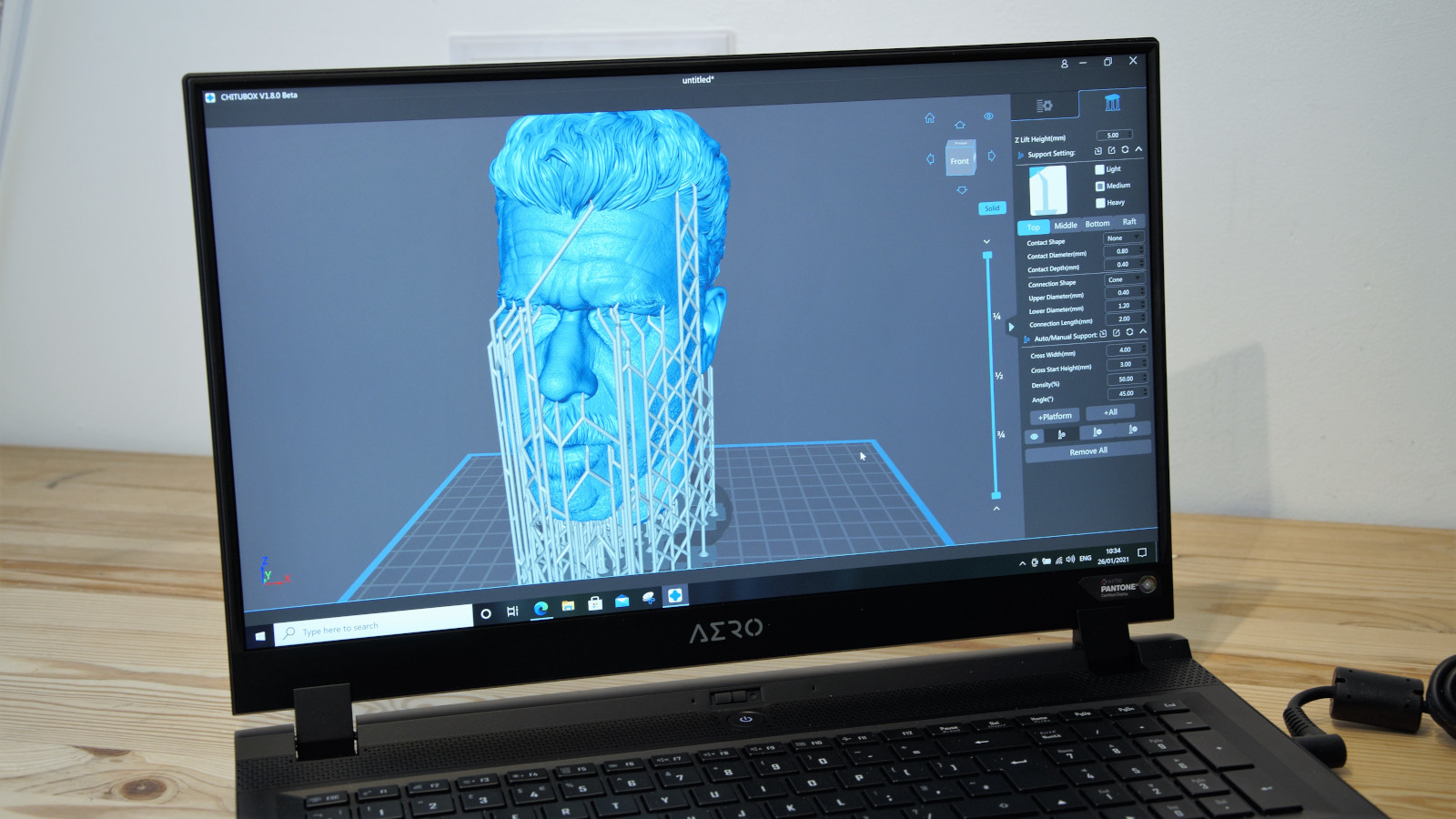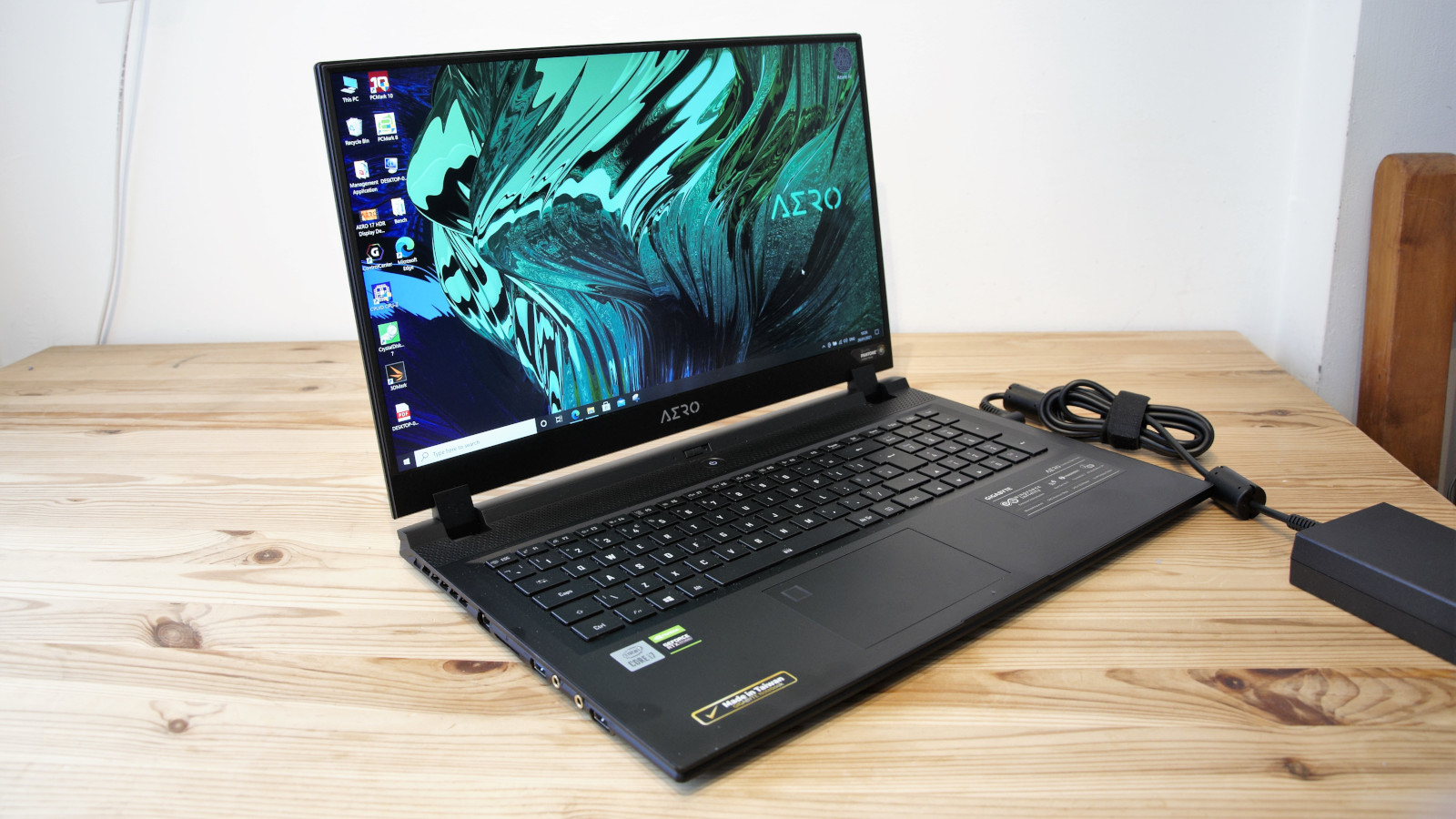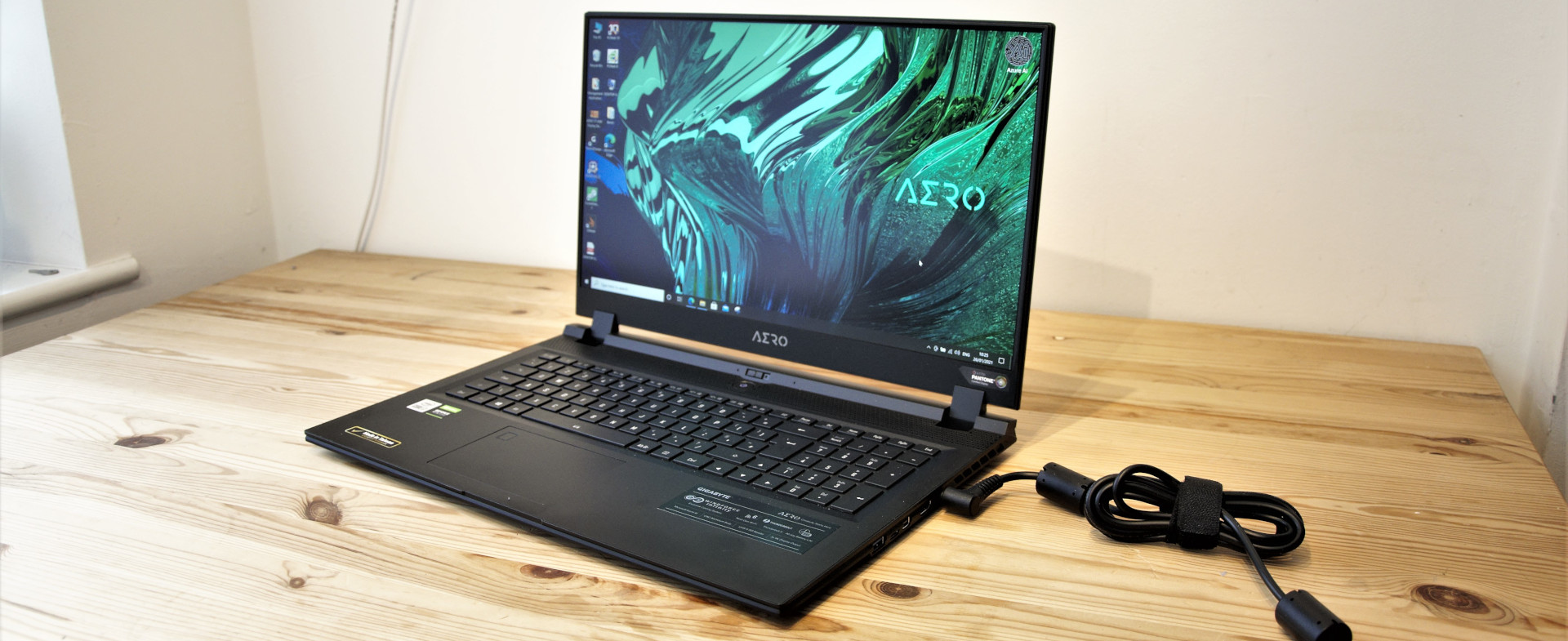Why you can trust TechRadar
Performance
Here's how the Gigabyte Aero 17 HDR XC scored in our suite of benchmark tests:
3DMark: Fire Strike: 19,297; Time Spy: 9025; Port Royal: 5515
Cinebench R20 CPU: 3,405
GeekBench: 1,290 (single-core); 7,524 (multi-core)
CrystalDiskMark: Sequential Read: 2,263/s; Sequential Write: 3,029MB/s; 4KiB Q32T1 Random Read: 44.14MB/s; 4KiB Q32T1 Random Write: 117.9MB/s
PCMark 8 (Home Test): 3,946 points
PCMark 8 Battery Life: 5 hours and 29 minutes
At this cost and specification, we fully expected the performance of this machine to be spectacular, and it didn’t disappoint.
The Aero 17 is one of the very few laptops we’ve seen that can run the 3DMark Port Royal raytracing test, and so we scored it on that along with the other typical challenging tests from that set.
The mobile version of the GeForce RTX 3070 installed has 5120 unified shaders, 96 ROPs and 426 TMUs. And, all this compute grunt is connected to 8GB of GDDR6 memory with a 384GB/s bandwidth over a 256-bit wide bus. Compared with the discrete version of the RTX 3070 that’s 788 fewer shaders and 56Gb/s less bandwidth, but it still outshines the desktop RTX 3060 in almost every respect.
How this chip has been adjusted for mobile use is best reflected in the TDP (watts) that the GPU has been specified to consume. The mobile RTX 3070 has a peak power demand of 115 watts, where the desktop part is rated for almost double that at 220 watts.
If we take one of the 3DMark bench tests as a good example, we’d expect the discrete RTX 3070 to score around 13,800 in TimeSpy, about 50% more than the mobile RTX 3070.
It’s worth considering that while this isn’t anywhere near the full desktop PC and discrete card combination performance levels, it makes almost everything else in the mobile sector look sad in comparison. The only faster option is the mobile RTX 3080; the same GPU that Gigabyte will be putting in the YC version of the Aero 17 HDR.

Another unexpected and robust aspect of this package is the battery life. It might make the Aero relatively heavy at 2.5kg, but the 99wh battery in this machine can run it for the better part of a working day without mains.
Sign up to the TechRadar Pro newsletter to get all the top news, opinion, features and guidance your business needs to succeed!
Or it will if you don’t significantly use the GPU, because the wattage that consumes could quickly empty the battery in a couple of hours depending on how hard it is pushed.
While it isn’t represented by these benchmarks, we’d also like to call out the quality of WiFi adapter in this machine, as with our WiFi 6 router it absolutely flew. Intel’s new AX200 Wireless chip makes the most of 802.11ax, and for those with supporting router technology, they’ll see much better connectivity and performance.
If these scores contain a real disappointment, it must be the mediocre NVMe SSD that Gigabyte placed in it. While the write speed of this unit is good, the read speed isn’t as high as we’d expected. This machine should have had a PCIe 4.0 slot to allow even greater speeds, and a better NVMe SSD installed than the review machine was blessed.

Final verdict
The Aero 17 XC is an impressive beast that could attract professionals wanting to edit movies and render graphics while away from their office, of for gamers with more cash than common sense.
That it manages so effectively to stand with a foot firmly planted in both camps is a testimony to the Gigabyte design team who managed not to alienate either base by making the hardware too outlandish looking or rigidly business-like.
Our issue, and it is one that many others have voiced is that the new Nvidia 30 series GPU is debatably the most marginal increase in performance over its previous generation that Nvidia has offered in the modern era of video cards.
Even using Gigabyte’s own numbers, it is only 17% faster than the previous XB model that used the RTX 2080 Super and a Core i9 CPU in 3DMark Fire Strike.
Some tasks offered an appreciable margin of improvement, but in others, the difference is much less noticeable.
It wouldn’t be unreasonable not to wonder if the XB model that offers the RTX 2080 is likely to be reduced in cost with the arrival of the new designs, and therefore potentially offer better value while stock exists.
For those that want the pinnacle of performance where cost isn’t a significant factor, Gigabyte has a YC model of this machine with a Core i9-10980HK processor and a mobile RTX 3080 GPU. If you thought the XC was expensive, then the YC is obviously not for you.
And, using the same benchmark that we just mentioned, that hardware is only 13% quicker than the XC model for the extra outlay.
What people might be tempted to think is that once you remove the cost of an RTX 3070 or RTX 3080 from the price, then the Aero 17 looks like a much more attractive proposition.
Except, as we’ve discussed already, the mobile RTX 3070 isn’t the same as the desktop GPU, and therefore should be considered more of an equivalent to the discrete RTX 3060.
That customers might invest this much in a laptop just for the GPU that is inside is indicative of how messed up the video card market has become, or rather, has been allowed to get.
Even if it can’t match the performance of the desktop 30 Series, the Gigabyte Aero 17 HDR XC is a lovely design that most designers and gamers would unreservedly adore. But the cost is still high, and it doesn’t offer a massive jump in performance over the previous generation.
It is faster and can eat the many graphical tasks for breakfast, and unlike discrete Nividia 30 Series video cards, it should be available soon.
Mark is an expert on 3D printers, drones and phones. He also covers storage, including SSDs, NAS drives and portable hard drives. He started writing in 1986 and has contributed to MicroMart, PC Format, 3D World, among others.

